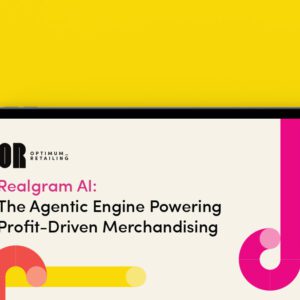
Target is canceling its Cartwheel Perks rewards program after only a year of testing in five markets. While the Cartwheel digital couponing app itself won’t be scrapped, it will eventually be rolled into the main Target app.
After shoppers accrued a certain number of points through the Perks program, they could choose from a number of special rewards, including discounts on their next purchase that ranged in value from $10 to $20 on items such as sunglasses, laundry detergent and athletic apparel.
The RTP team discusses what retailers can learn from Target as they design their loyalty programs going forward, and whether “points” and the promise of discounts on future purchases are effective incentives in today’s retail landscape.
Debbie Hauss, Editor-in-Chief: I just think this was not the right direction for Target, although certainly worth testing. Maybe the loyalty benefits just weren’t compelling enough. For example, 5,000 points earned shoppers a free toy, free book or a free bottle of laundry detergent. Current Target shoppers already are loyal to the brand, and the app was not the right way to motivate a new set of consumers to visit a Target store. Additionally, this was a small segment test, just five markets, but just the fact that Target tried something and is cancelling it motivated the press coverage. There also was a supposed scam going on during the holidays that reportedly cost Target a lot more than anticipated. According to couponsinthenews.com, “By signing up for the Perks program multiple times under different identities, many shoppers found they could get as many new Perks accounts — and as many introductory Perks rewards — as they wanted. Some of them began taking screenshots of their Perks bar codes to share with — and sell to — other shoppers, even those who don’t live in one of the test cities.” I agree, it’s time for Target to try something different.
Adam Blair, Executive Editor: The cancellation of the Cartwheel Perks program is a reminder that the term “loyalty program” is, in most cases, a misnomer. For retailers, the real benefit of such programs is their ability to provide granular, shopper-level detail on purchases. These programs’ ability to accomplish other goals — such as building store foot traffic — are generally icing on a cake composed of rich customer data. If Target wasn’t using Cartwheel Perks to learn more about shoppers in the test markets, it’s no wonder the retailer cancelled the program. Today, retailers have multiple tools to track customer activity, including mobile apps, so it makes sense that Target is folding Cartwheel into its parent app (presumably in an effort to increase its “stickiness”). Many brands are discovering that they can get the customer data they crave without the hassle of creating new loyalty programs.
Klaudia Tirico, Features Editor: The Cartwheel Perks app — on its own — was bound to fail for the sole reason that you had to download a completely separate app to gain rewards. Since a typical U.S. smartphone user has about 27 apps on their phone, according to Statista, people are bound to either forget they have the app (since it’s on an entirely different platform) or not both to download another single-purpose app. With that said, Target was smart to cancel Cartwheel and weave it into its own app. As for whether or not a rewards program is an effective incentive in today’s retail landscape, I believe it is, but it needs to be tailored to specific customer needs. Simply offering free shipping or random discounts for a certain number of points won’t be enough to keep consumers engaged. Brands like GameStop, Marvel and Fresh Step actually offer unique incentives that go beyond discounts, such as charity donations and experiences. Moral of the story is, don’t create a loyalty program just to create one. Make it personal and customers are bound to engage.
Glenn Taylor, Senior Editor: Cartwheel Perks appears to be one of many that relied on an old model to retain old shoppers. But it seems that model just isn’t incentivizing consumers enough, especially when there are so many options out there. Up to 57% of shoppers told Colloquy they ditched a rewards program because it took too long to rack up enough points or miles to claim a reward. I tend to agree with that notion; the only loyalty program I presently subscribe to is the one at TJ Maxx, and I still feel like I’m not going to reach its points goal for a long time. If anything, that type of program’s biggest value proposition may be that you don’t have to pay for everything upfront, and can pay in increments down the line. But that’s still not really why I signed up in the first place, I just knew that I shopped there for apparel more often than anywhere else. Target needs to evaluate its store model first (which admittedly, it has been doing intently) before integrating loyalty perks.
Matt Halchak, Editorial Intern: In principle, Cartwheel Perks and other similar programs are a great idea — they reward customers for loyalty and help retailers drive traffic to their stores. Personally, loyalty programs have been valuable to me at places where, not surprisingly, I am more likely to shop in-store — athletic attire from sporting goods stores, sneakers from Finish Line and other apparel retailers where I prefer to try on clothes and shoes before purchasing them. However, rewards programs are not necessarily a driver that encourages me try a new store. In order for points or future discounts to be effective incentives in today’s retail landscape, retailers must first ensure that customers are coming back to their stores. They also must make rewards points or offers easy to access or use. In the case of Target, having Cartwheel Perks on a separate app added an unnecessary step to the process. Other places such as Kohl’s don’t offer points unless consumers use a store credit card or limit the rewards that can users claim, which can deter some shoppers.






